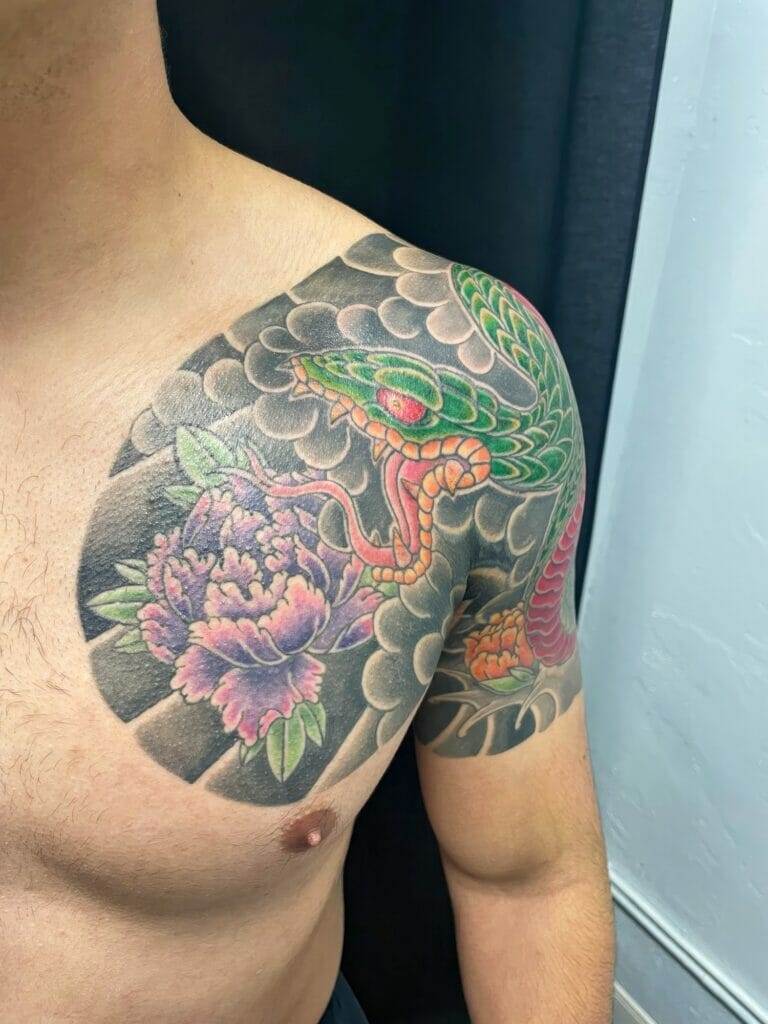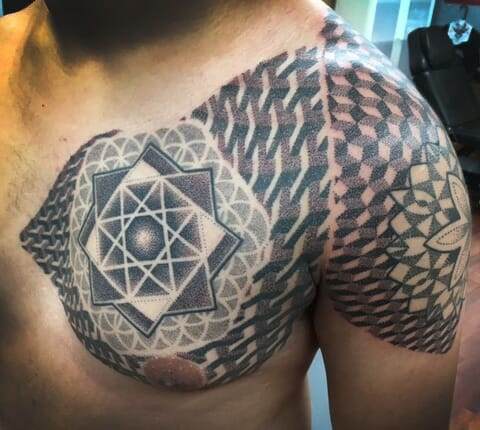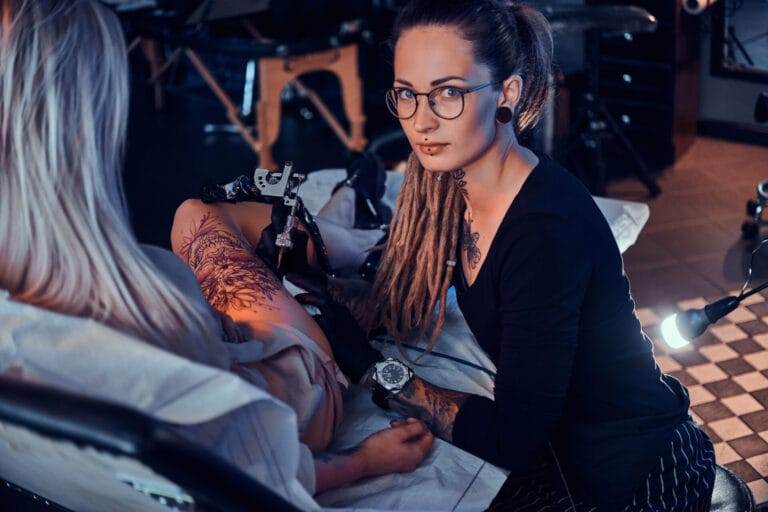
Introduction
In the vibrant world of body art, the allure of tattoos often captures the imagination of both seasoned enthusiasts and first-timers alike. However, the journey to achieving that perfect ink can occasionally take unexpected turns, leading to outcomes that fall short of what was envisioned. It’s crucial to understand the various factors that can symbolize the difference between a stunning piece of artwork and a regrettable experience. Choosing the right tattoo means being aware not only of the design and placement but also of the quality and integrity of the application process. Here, we’ll explore some common red flags that can indicate a less-than-ideal tattoo environment.
The Importance of Quality in Tattooing

Quality in tattooing goes beyond just the artistry; it encompasses the entire experience from consultation to aftercare. When you step into a tattoo studio, several aspects should catch your attention. Do they maintain a clean and sterile environment? Is the artist attentive to your concerns? Here are some considerations to keep in mind:
- Consultation Clarity: A professional artist will engage you in a detailed discussion about your design.
- Studio Environment: Observing the hygiene practices of the studio can offer insights into their overall commitment to quality.
- Artist Credentials: Reviewing the artist’s portfolio can help ensure you’re in capable hands.
Addressing Potential Issues
While the excitement of getting tattooed is palpable, it’s essential to recognize potential issues that can arise. Addressing these concerns before they escalate can make all the difference:
- Unusual Pain Levels: If pain is unexpectedly intense during the procedure, it may indicate underlying issues with technique or equipment.
- Design Integrity: Look out for uneven lines or smudged details, which can detract from the overall impact of your tattoo.
Navigating the tattoo landscape requires vigilance and awareness. By preparing yourself with the right knowledge, you can help ensure that your tattoo experience is as fulfilling and meaningful as you intended it to be.
Unusual Pain Level
As we navigate through the tattoo experience, one crucial aspect to monitor is the pain level during the procedure. While some discomfort is expected, anything beyond what seems reasonable can be a cause for concern.
Uneven and Wobbly Lines
When assessing a tattoo, one of the first things to examine is the line work. Uneven or wobbly lines can not only indicate a lack of skill but may also correlate with an uncomfortable application process. Here are a few signs to look out for:
- Inconsistent Line Width: Lines in a well-executed tattoo should appear uniform. If they vary dramatically, it can reflect on the artist’s technique.
- Shaky Hand Movements: This may happen if the artist is working in a position that strains their body, or if they are using inadequate equipment. Uneven lines can lead to an unsatisfactory appearance.
Imagine sitting through a session where every stroke of the needle feels jarring or erratic. This experience can heighten anxiety and make the process far less enjoyable. If you notice such irregularities, it’s worth discussing them with your artist immediately.
Blurry or Smudged Design

Another sign of potential trouble is when the tattoo looks blurry or smudged instead of crisp and clean. Sometimes, the initial pain can be accompanied by an unsettling feeling that the artwork may not turn out as expected. Here are a few key points to consider:
- Poor Technique: A blurry tattoo often results from too much ink being deposited or insufficiently mastered shading techniques.
- Ink Quality: Using inferior ink can cause colors to blend more than intended, leading to a muddy appearance rather than a vibrant design.
Visualizing your art becoming less distinct can be disheartening. To avoid such mishaps, always ensure that you are working with a reputable artist who prioritizes clean application techniques and quality materials. In summary, being alert to unusual pain levels, irregular lines, and unclear designs can help you identify issues early on. Ensuring that your tattooing experience is meeting your expectations can lead to a memorable and positive outcome, reflecting your desired vision.
Poor Hygiene Practices
In the quest for the perfect tattoo, hygiene practices play an essential role in ensuring both safety and quality. The overall experience is significantly influenced by the cleanliness of the studio and the protocols followed by the artist. Neglect in this area can lead to complications that affect not just the aesthetic outcome, but also your health.
Inappropriate Equipment Usage
When it comes to tattooing, the tools of the trade are as vital as the artist’s skill. Inappropriate usage of equipment can lead to unsatisfactory results and, more importantly, health risks. Here are a few red flags to watch for:
- Single-Use vs. Reusable: Ensure that needles and ink caps are single-use. If equipment appears reused or inadequately cleaned, it raises serious safety concerns.
- Tool Storage: Pay attention to how the artist handles their tools. Instruments should be stored in sterile containers and not left exposed to the environment.
If, for instance, you see an artist rummaging through equipment that appears unsanitized, it’s perfectly acceptable to voice your concerns. After all, your health comes first.
Lack of Sanitary Conditions
The general cleanliness of the tattoo studio undoubtedly reflects its quality and the artist’s professionalism. A lack of sanitary conditions is a clear indication that your experience may be compromised. Here are some key considerations:
- Surface Cleanliness: The workstation should be free of unnecessary clutter, and all surfaces should be wiped down and disinfected before starting any procedure.
- Artist Hygiene: Observe whether artists are wearing gloves and changing them as necessary. They should also follow proper hand hygiene before touching equipment or you, the client.
Imagine stepping into a studio that feels more like a chaotic workshop rather than a professional environment. Such surroundings can dampen your excitement while increasing anxiety about the quality and safety of your tattoo. In conclusion, maintaining high standards of hygiene is non-negotiable in the tattoo world. By being attentive to equipment usage and the cleanliness of the environment, you can protect yourself from potential complications while ensuring that your tattoo experience remains enjoyable and memorable.
Misspelled Words or Incorrect Translations
When it comes to tattoos, the precision of language and artistry is paramount, especially if the design includes words or phrases. Mistakes, such as misspelled words or inaccurate translations, can lead to considerable dissatisfaction and unintended meanings.
Inaccurate or Incomplete Details
One of the most frustrating experiences after getting a tattoo is realizing that the details are not just misrepresented, but fundamentally incorrect. This is especially true for tattoos that incorporate significant quotes, names, or phrases. To avoid this pitfall, consider the following:
- Double-Check Spelling: Before getting inked, it’s crucial to verify the spelling of any words. A simple typo in a name or phrase can lead to a lifelong reminder of a mistake.
- Translation Services: If a tattoo includes a foreign language, ensure that a reliable source—like a professional translator—provides the translation. Relying on online translators can lead to significant inaccuracies.
For instance, imagine getting a tattoo of a meaningful phrase in another language, only to find out later that it translates to something entirely different; the emotional impact can be disheartening.
Unprofessional Artwork Placement
Another area of concern is the placement of the tattoo itself. A poorly positioned design can overshadow the intended meaning and aesthetic appeal. Here are key aspects to observe:
- Alignment and Symmetry: Tattoos should be placed with consideration of body contours and movement. Off-centered artwork can feel disjointed and diminish the overall impact.
- Visibility and Suitability: Consider whether the tattoo’s location aligns with your lifestyle or professional environment. Some placements might lead to unwanted exposure or challenges in covering up the tattoo when necessary.
Envision stepping into a job interview with an important phrase visible in a choppy, misaligned tattoo. Not only does it hamper your presentation, but it can also detract from the message you intended to convey. In summary, avoiding misspellings, inaccurate translations, and unprofessional artwork placement is crucial to ensuring that your tattoo experience is fulfilling. By taking proactive steps to verify details and communicate clearly with your artist, you can enhance the likelihood that your tattoo will be a source of pride rather than regret.
Fading or Discoloration

As time goes on, the longevity of a tattoo can be put to the test. Fading or discoloration are common issues that can significantly alter the original appearance of the artwork. Understanding the underlying causes will help you ensure that your tattoo remains vibrant and true to its intended design.
Inconsistent Ink Quality
One primary reason for fading tattoos is the ink quality. Tattoo ink varies widely, and using inferior or diluted inks can result in poor longevity. Here’s why it matters:
- Brand Reputation: Well-established ink brands often invest in research and development to ensure color brightness and durability. Ask your artist about the inks they use to ensure they adhere to high-quality standards.
- Ink Composition: Different inks have varying levels of pigmentation. Higher saturation typically translates to longer-lasting color. If an artist uses cheaper, less pigmented inks, you may find your tattoo fading prematurely.
Picture a vibrant piece of art that loses its richness over time due to substandard materials. It’s disheartening for anyone who invested time and emotion into the design.
Lack of Depth or Dimension in Design
Another factor contributing to fading can be a lack of depth and dimension in the artwork itself. Flat designs tend to show wear and fade more quickly than those with layers and subtle details. Here are aspects to consider:
- Layering Techniques: Tattoos that employ various shading techniques create depth. Depth adds dimension, helping the colors hold better over time. A flat, simplistic artwork may lead to quicker deterioration.
- Use of Contrast: High contrast between colors can also lead to a more dynamic appearance and help maintain the tattoo’s vibrancy. Without contrast, designs may appear washed out sooner.
Imagine admiring a once intricate tattoo that seems to blend into the skin over time due to lack of depth. The evolution from a masterpiece to a faded mark can be frustrating, especially if one wishes to maintain the beauty of their body art. In summary, fading and discoloration can dampen the initial excitement of having a tattoo. By being aware of the importance of ink quality and the design’s depth, individuals can make informed decisions that ensure their tattoos remain as striking and meaningful as the day they were created. Proper aftercare further supports longevity, allowing you to enjoy your artwork for years to come.






